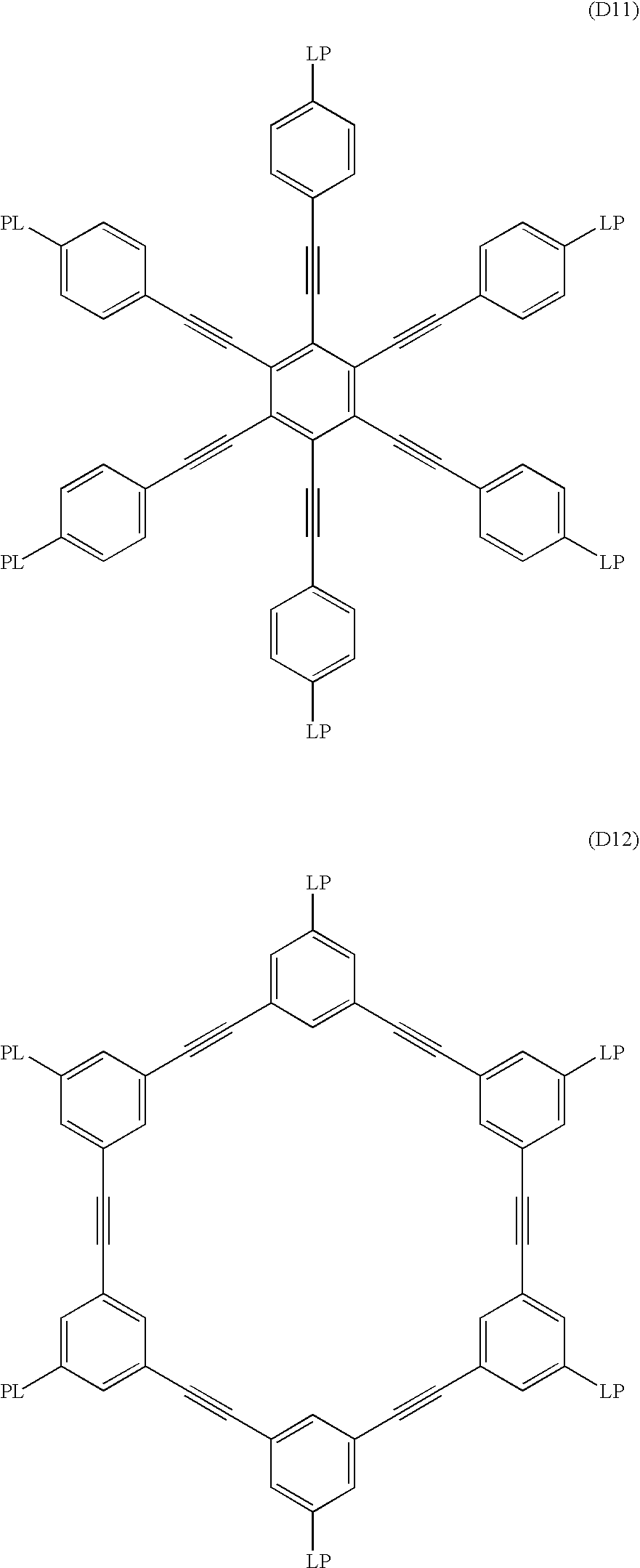Optical compensating sheet having cellulose ester film, alignment film, and optically anisotropic layer comprising liquid-crystalline molecules with fixed alignment
a technology of optical compensating sheet and alignment film, which is applied in the field of liquid crystal display, can solve the problems of poor display image quality, high cost of saponification treatment, and poor adhesion of the film surface, so as to improve the adhesion and production cost of the optical compensating sheet , the effect of excellent surfa
- Summary
- Abstract
- Description
- Claims
- Application Information
AI Technical Summary
Benefits of technology
Problems solved by technology
Method used
Image
Examples
example 1
[0288] (Preparation of cellulose ester film)
[0289] The following components were placed in a mixing tank, and then heated and stirred to dissolve. Thus, a cellulose acetate solution was prepared.
1 Components of cellulose acetate solution Cellulose acetate (acetic acid content: 60.9%) 100 weight parts Triphenyl phosphate 7.8 weight parts Biphenyldiphenyl phosphate 3.9 weight parts Methylene chloride 300 weight parts Methanol 54 weight parts 1-Butanol 11 weight parts
[0290] In another mixing tank, the following components were placed, heated and stirred to dissolve. Thus, a retardation-increasing agent solution was prepared.
2 Components of retardation-increasing agent solution 2-Hydroxy-4-benzyloxybenzophenone 12 weight parts 2,4-Benzyloxybenzophenone 4 weight parts Methylene chloride 80 weight parts Methanol 20 weight parts
[0291] The prepared retardation-increasing agent solution in the amount of 22 weight parts was added to 474 weight parts of the cellulose acetate solution, and stir...
example 2
[0302] (Preparation of cellulose ester film)
[0303] A three-layered casting die was used. The dope for inner layer was the cellulose acetate dope prepared in Example 1, and that for outer layers was a diluted dope prepared in the same manner as that in Example 1 except that the amount of the solvent was increased by 10%. The dopes were simultaneously cast onto a metal support. The formed film was peeled off, and dried to prepare a three-layered cellulose acetate film (thickness of inner layer: thickness of each outer layer=8:1). The film was stepwise dried at 70.degree. C. for 3 minutes and at 130.degree. C. for 5 minutes, and then peeled from the support. The peeled film was then further dried at 160.degree. C. for 30 minutes to evaporate the solvent. Thus, a cellulose acetate film (CA-2) was prepared.
[0304] The retardation of the produced film was measured to find that the Rth and Re were 80 nm and 11 nm, respectively
[0305] (Saponification treatment and formation of orientation lay...
example 3
[0310] (Preparation of cellulose ester film)
[0311] The cellulose triacetate solution consisting of the following components were prepared. The solvents shown below were beforehand mixed, and then cellulose triacetate powder (mean particle size: 2 mm) was gradually added to the mixed solvent while stirred. The mixture was left at room temperature (25.degree. C.) for 3 hours.
5 Components of cellulose acetate solution Cellulose acetate (acetic acid content: 60.9%) 100 weight parts Triphenyl phosphate 7.8 weight parts Biphenyldiphenyl phosphate 3.9 weight parts 2-Hydroxy-4-benzyloxybenzophenone 2.25 weight parts 2,4-Benzyloxybenzophenone 0.75 weight part Methyl acetate 282 weight parts Cyclopentanone 118 weight parts Methanol 29 weight parts Ethanol 29 weight parts
[0312] The prepared dope was cast on a drum cooled at 0.degree. C. The formed film was peeled when the solvent content reached 70 wt. %, and both sides of the film was fixed with a pin tenter. While held so that the stretching...
PUM
| Property | Measurement | Unit |
|---|---|---|
| Fraction | aaaaa | aaaaa |
| Angle | aaaaa | aaaaa |
| Angle | aaaaa | aaaaa |
Abstract
Description
Claims
Application Information
 Login to View More
Login to View More - R&D
- Intellectual Property
- Life Sciences
- Materials
- Tech Scout
- Unparalleled Data Quality
- Higher Quality Content
- 60% Fewer Hallucinations
Browse by: Latest US Patents, China's latest patents, Technical Efficacy Thesaurus, Application Domain, Technology Topic, Popular Technical Reports.
© 2025 PatSnap. All rights reserved.Legal|Privacy policy|Modern Slavery Act Transparency Statement|Sitemap|About US| Contact US: help@patsnap.com



